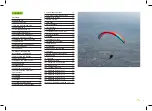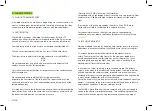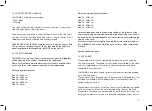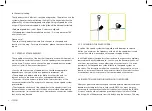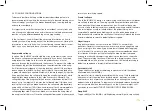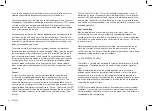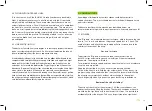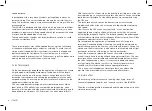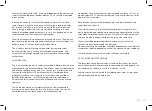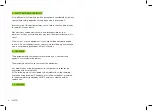
14
speed decrease.
In paragliders with a very pronounced arc, pulling big ears means an
increase in drag. On a very arched wing, the ears do not fold, they just
hang. The increase of drag is more pronounced than on wings with a less
pronounced arc.
The IKUMA 2 is designed with little chord, which is good in normal flight
conditions. However, this same damping is what can cause us to have
problems to regain normal flying speed after a high increase of the angle
of attack and the added drag of the ears.
These particularities, together with turbulent thermic conditions, could
cause an unintentional stall.
The solution: big ears may still be applied but you must be fully aware
of the above-mentioned points and act accordingly. To avoid the stall,
simply use half speed-bar (this is sufficient) to increase the speed and
decrease the angle of incidence. This should allow you to maintain
sufficient speed to prevent the stall. Take care not to pull the brakes while
making the ears as this will make a stall more likely!
5.2 B3 TECHNIQUE
On the new generation paragliders the application of big ears can create
a high degree of trailing edge turbulence. In addition, with the length
of the cord and the arc of the wing, the ears have a tendency to “flap”,
increasing the turbulence and causing the paraglider to lose too much
airspeed, making it necessary for the pilot to recover it, either using the
speed-bar or releasing the ears.
This new rapid descent technique was first discovered by our Niviuk
team pilots in 2009 while flying a competition prototype wing, which,
because of its line plan and high aspect ratio would not allow big ears to
be applied. In fact, big ears on 2-liner wings can often prove difficult.
With the current 2 or 3-liner wings, the inability to pull big ears, or the risk
involved in doing so, concerns many pilots who want to have a controlled
rapid descent technique. For the above reasons we recommend using
the 3B3 line.
This technique easily increases the descent rate without causing
problems and without the risk of causing a collapse while maintaining
high speed.
How? Locate the 3B3 line on your risers and, as you would when
applying big ears, simply pull down firmly and smoothly until you see
both wingtips drop back slightly. The forward speed of the glider speed
will then reduce slightly, quickly stabilize and then increase. You will then
experience a descent rate of around 5-6m/s.
We recommend the application of the speed bar whilst using this
technique. Controlled turning of the wing can easily be maintained by
weight shifting, exactly the same as you would with big ears. During this
manoeuvre, the first sensation is a decrease in relative wind and a slight
backwards inclination of the wing, as if going backwards.
To exit the manoeuvre release the lines as you would with big ears,
control the pitch and the wing will quickly adopt normal flight. This new
technique allows a comfortable and controllable rapid descent without
the risk of experiencing a cravat. It is very comfortable and makes
turning simple. We advise you to first try this technique in smooth
conditions with sufficient altitude above appropriate terrain.
This is a new controlled descent technique that only needs a little
practise to be executed with total comfort and effectiveness.
5.3 B-LINE STALL
When carrying out this manoeuvre, the wing stops flying, loses all
horizontal speed and the pilot is no longer in control of the IKUMA 2.
The airflow over the profile is interrupted and the wing enters a situation
similar to parachuting.
Summary of Contents for IKUMA 2
Page 1: ...IKUMA 2 User s manual...
Page 19: ...19...
Page 22: ...10 3 RISERS PLAN 22...
Page 23: ...10 4 SUSPENSION PLAN 23...
Page 29: ...niviuk com...



